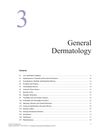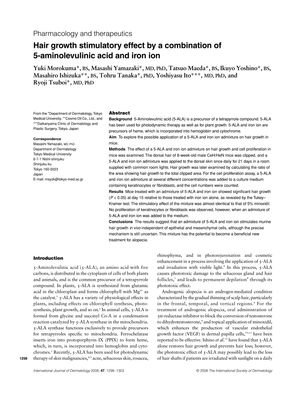TLDR A mix of 5-aminolevulinic acid and iron ion can speed up hair growth.
In 2008, a study found that a combination of 5-aminolevulinic acid (5-ALA) and iron ion significantly stimulated hair growth in both male mice and 20 male patients with androgenic alopecia. The mice showed significant hair growth by day 15, comparable to the effects of 5% minoxidil, while the male patients experienced accelerated hair growth after applying the mixture to their scalp for 1 month. Despite these positive outcomes, no increase in keratinocyte or fibroblast proliferation was observed in vitro, indicating that the hair growth mechanism did not involve direct cell proliferation. The exact mechanism remains unknown, but the results suggest potential for the 5-ALA and iron ion combination as a new alopecia treatment, warranting further research.
66 citations
,
February 2007 in “The journal of investigative dermatology/Journal of investigative dermatology” Adenosine may promote hair growth by increasing FGF-7 levels in dermal papilla cells.
 397 citations
,
February 2004 in “British Journal of Dermatology”
397 citations
,
February 2004 in “British Journal of Dermatology” Minoxidil boosts hair growth by opening potassium channels and increasing cell activity.
 83 citations
,
December 2001 in “Journal of Investigative Dermatology”
83 citations
,
December 2001 in “Journal of Investigative Dermatology” Minoxidil boosts hair growth by targeting adenosine and possibly sulfonylurea receptor 2B.
 192 citations
,
March 1998 in “British Journal of Dermatology”
192 citations
,
March 1998 in “British Journal of Dermatology” Minoxidil boosts growth factor in hair cells, potentially promoting hair growth.
 June 2025 in “Journal of Cluster Science”
June 2025 in “Journal of Cluster Science” Metal nanoparticles show promise for treating hair loss but need more research to ensure safety.
 54 citations
,
January 2013 in “BMC Complementary and Alternative Medicine”
54 citations
,
January 2013 in “BMC Complementary and Alternative Medicine” Thuja orientalis hot water extract may help hair grow by starting the growth phase and improving hair follicle development.
 22 citations
,
November 2018 in “Brazilian Journal of Pharmaceutical Sciences”
22 citations
,
November 2018 in “Brazilian Journal of Pharmaceutical Sciences” New physical methods like electrical currents, ultrasound, and microneedles show promise for improving drug delivery through the skin.
 94 citations
,
September 2014 in “Therapeutic Delivery”
94 citations
,
September 2014 in “Therapeutic Delivery” Nanoparticles can improve skin treatments by better targeting hair follicles, but more research is needed for advancement.
 January 2017 in “Springer eBooks”
January 2017 in “Springer eBooks” The document explains various skin conditions and their treatments.








